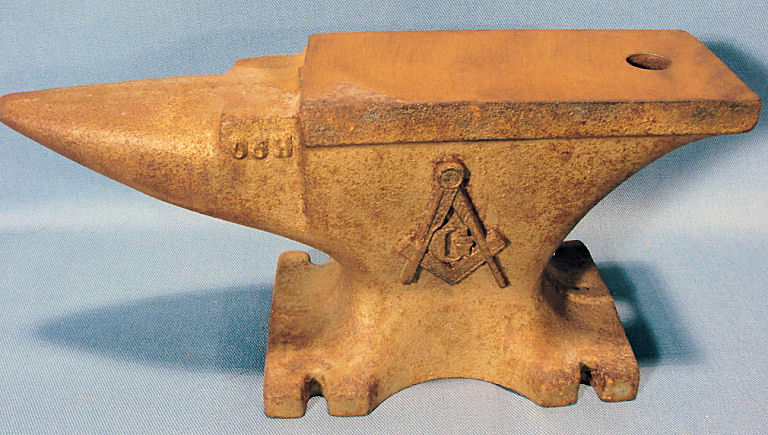Paperweight
Anvil from
Eagle River
Lodge No. 248 F. & A.M.


Here is
a nice
metal paperweight Masonic anvil. On the front side it has the Square and
Compasses. On the back it says Eagle River Lodge No. 248, F & AM. It
measures 8.5" long. 4" tall.
There are many designs for
anvils, which are often tailored for a specific purpose or to meet the needs
of a particular smith. The common blacksmith's anvil is made of either
forged or cast steel, tool steel, or wrought iron. (However, cast iron anvils
are generally shunned, as they do not return the energy of a hammer blow as
does steel.) Historically, some anvils have been made with a smooth top
working face of hardened steel welded to a cast iron body, though this
manufacturing method is no longer in use. It has at one end a projecting
conical bick (beak, horn) for use in hammering curved
pieces of metal. Occasionally the other end is also provided with a bick,
which is then partly rectangular in section. Most anvils made since the late
1700s also have a hardy hole and a pritchel hole where various tools, such as
the anvil-cutter or hot chisel, can be inserted to be held by the anvil. Some
anvils have several hardy and pritchel holes, to accommodate a wider variety
of hardy tools and pritchels. An anvil may also have a softer pad for
chisel work. Anvils have been used since early Bronze Age times by
smiths of all kinds for metal work, although the tool was also used in much
earlier epochs for stone and flint work.
There are many references to
anvils in ancient Greek and Egyptian writing, including Homer's works. The anvil
was perfected during the Middle Ages when iron working was commonplace.

